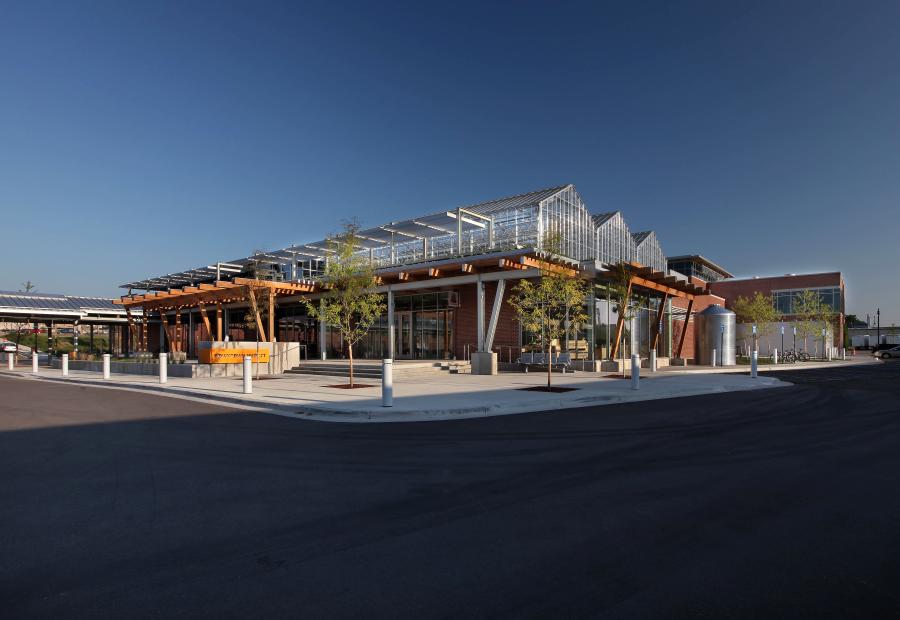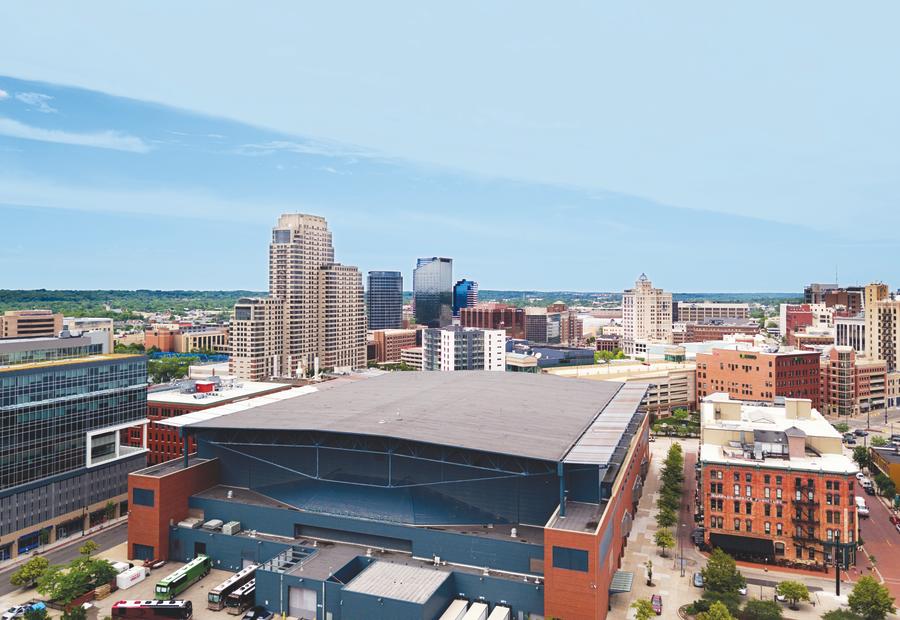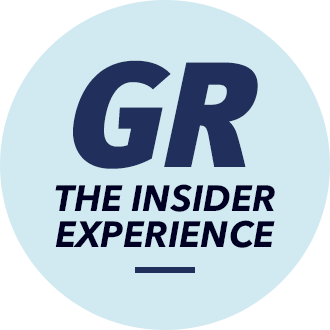For decades, game-changing building and revitalization projects driven by strong public-private partnerships have been the hallmark of the Kent County region. Grand Action 2.0 – and its earlier iteration, Grand Action – is the private sector organization behind many of these pivotal partnerships. In downtown Grand Rapids – in the heart of Kent County – it’s impossible to walk a block or two without standing in the shadow of a project that began as a Grand Action vision.
Van Andel Arena, DeVos Place Convention Center, the Grand Rapids Downtown Market and the revitalization of the Grand Rapids Civic Theater were all envisioned and seeded by this group of business and community leaders. The group was also a key player in attracting the Michigan State University College of Human Medicine to Grand Rapids’ Medical Mile.
In 2016, at the urging of Experience Grand Rapids, Grand Action commissioned CSL International to conduct a city-wide Grand Rapids Destination Asset Study. The study’s findings were released in December of that year and included recommendations for infrastructure investments that could elevate Grand Rapids and Kent County as a top-tier visitor destination. Proposed investments included a downtown amphitheater, soccer stadium and assets to leverage the ongoing Grand River restoration project.
Grand Action took a brief hiatus after the release of the 2016 report. They returned as Grand Action 2.0 in 2020, announcing that they would build on the momentum of the previous 25 years and collaborate to promote an even more compelling and welcoming community. That month, COVID-19 hit.

The Grand Rapids Downtown Market is one example of the public-private partnerships fostered by Grand Action.
Photo by Grand Rapids Downtown Market
Planning for a stronger future
While the pandemic had an immediate and devastating impact on the West Michigan regional economy, Grand Action 2.0 has always been focused on planning and advocacy for the long term. They understand that unless community leaders plan now, it will be much more difficult to recover from the impact of the pandemic on our local economy, businesses, workers and residents.
So, instead of putting the vision cast in 2016 on hold, they engaged CSL International to conduct a Venue and Attraction Development study focused on the feasibility of three recommendations from the 2016 study:
- Long-term investment in DeVos Place Convention Center to maintain and enhance its competitive position in the industry.
- Development of a new professional soccer and entertainment event stadium.
- Development of a new concert and entertainment outdoor event amphitheater.
Experience Grand Rapids, along with dozens of community stakeholders, participated in the study. On behalf of Grand Action 2.0, CSL presented their study findings and recommendations in November 2020, forecasting that convention center enhancements, a new soccer stadium and new amphitheater will be some of the most impactful projects ever for our community. As the Experience Grand Rapids team looks to the future of the convention and visitor industry, we could not agree more.

Long-term investment of DeVos Place Convention Center will help maintain Grand Rapids' competitive position in the meetings industry.
Photo by Experience Grand Rapids
Adapting to new ways of meeting
As Grand Rapids has grown in population, reputation and vibrancy over the years, so has its convention and meetings sector. Though as this sector grows, the available space necessary to house it needs to as well. Opened in 2004, the DeVos Place Convention Center (DPCC) has hosted a wide array of local, regional and national conventions and tradeshows, and its success has become a point of pride for many stakeholders in the community. To maintain and enhance market capture, the CSL study outlined zero to five-year and five-to-10-year investments that focus on various initiatives to address post-COVID-19 conditions and other industry trends.
In the first five years, investments, such as expanded meeting space of 10,000 square feet, would improve DPCC’s ranking among its competitive set from fifteenth to sixth. Additionally, enhancing broadcast, streaming and other new technologies will be important as virtual meetings continue to grow during and after the pandemic. Similarly, expansion and the creation of open spaces, including lobbies, concourses and an outdoor event area adjacent to DPCC, are necessary in navigating the post-COVID event industry.
In years five to 10, they recommend the launching of 550 or more new hotel rooms in and around the downtown area to support any future large-scale DPCC expansion, with 300 to 500 of these rooms being attached or adjacent to the facility. In years six through 10, finalization of program targets and expansion of the DPCC could take place, provided market demand and overall occupancies warrant this increase in event space.

Van Andel Arena is home to three professional sports teams: the Grand Rapids Gold, Griffins and Rise.
Photo by Courtesy of the Grand Rapids Gold
Bolstering the economy through professional sports
Interest in professional soccer has seen significant growth in the U.S. in the past several years. Given the size of the Grand Rapids market, and based on the feedback from league officials, the United Soccer League Championship (USLC) classification represents the best fit to maximize Grand Rapids’ market potential. While the market currently supports other minor league professional sports, soccer appeals to a broader millennial audience, in addition to the families typically drawn to the affordable entertainment offered by minor league teams.
To secure a USLC franchise for Grand Rapids, an ownership group would need to be identified, with some form of public or private partnership to finance the new stadium. Based on the characteristics of the local market, physical and operational characteristics of comparable USLC stadiums and feedback from project stakeholders and potential users of the venue, the CSL study recommends a stadium with a seating capacity of 7,000, supported by 2,000 parking spaces within walking distance. The stadium would consist of premium and club seats, small group boxes, luxury suites and a variety of stadium amenities.
In 2023, Grand Action 2.0 signed an agreement with the Grand Rapids-Kent County Convention/Arena Authority (CAA) to formalize the pursuit of development, funding and construction of a soccer venue. Grand Action had already received preliminary development materials prepared by Progressive AE, a national design firm based in Grand Rapids.
A location for the stadium has yet to be formally announced, but one site under consideration is a city-owned property just north of David D. Hunting YMCA – easily walkable from downtown hotels and attractions. Officials believe the stadium could be completed in 2026 or 2027.
Even sooner – in January 2024, to be precise – Grand Rapids will add a pro volleyball franchise to its sports roster, which also includes the Grand Rapids Griffins (hockey), Grand Rapids Gold (basketball) and West Michigan Whitecaps (baseball). The Grand Rapids Rise is the city’s first major-league women’s sports team and it will compete as a member of the Pro Volleyball Federation.
Downtown’s Van Andel Arena will serve as the team’s home base, hosting 12 of the 24 games the team will play from late January to early May.

The CSL study recommends adding an outdoor amphitheater to downtown Grand Rapids to complement the indoor capacity of the Van Andel Arena pictured here.
Photo by Experience Grand Rapids
Bringing outdoor events and entertainment to Kent County
As Grand Rapids increasingly attracts touring artists and promoters to premier venues including the Van Andel Arena, Frederik Meijer Gardens & Sculpture Park, and DeVos Performance Hall, local stakeholders have noticed a gap in the local live performance venue infrastructure. This has forced large outdoor-specific tours to bypass the market due to the lack of a large, modern amphitheater venue.
A comprehensive market research study estimated that a new amphitheater in downtown Grand Rapids could attract dozens of major concerts and other events and draw many thousands of visitors from a large regional area. Other uses for the space could include community events, comedy shows and performances. Events would cater to a broad audience, reflective of the diverse cultures, ages and musical tastes of the entire community.
Grand Action 2.0 partnered with the local convention authority to move forward on developing a downtown amphitheater. In summer of 2023, they announced plans to acquire 31 acres of city-owned property along the Grand River and revealed their vision for the site. With an overall capacity of 12,000 seats – 7,000 fixed and 5,000 on the lawn – the new state-of-the-art amphitheater is projected to host 54 ticketed events and 300,000 visitors every season, generating $490 million new economic impact over the net 30 years.
The amphitheater will be surrounded by dining and retail options, with outdoor seating in a public park setting, making it ideal for formal and informal gatherings and uses throughout the year. All of these amenities will be located less than a 10-minute walk from Grand Rapids’ downtown convention neighborhood.
In September 2023, it was announced that the facility will be known as “Acrisure Amphitheater” after local financial tech company Acrisure LLC purchased naming rights for $30 million – more than half the total project goal for private donations.
Construction is slated to begin in 2024, with completion anticipated in 2026.
Ambitious development leads to economic prosperity
Just like Grand Action 2.0, we’re confident in West Michigan’s bright future and see long-term, visionary investments as a key to ensuring our region continues to grow and thrive. Our community must look forward to the future of arts, conventions and entertainment to best maximize the potential of Grand Rapids’ tourism and event industry.
The development of these key recommendations will enhance the quality of life for West Michigan residents and workers, create jobs and attract business and talent to the region. As with anything Grand Action 2.0 does, public-private partnerships are key to these developments. While the organization identifies opportunities and secures private investment up front, each of the projects will require public sector leadership and investment.
Our community’s continued economic momentum will be dependent, in large part, on the public and private sector’s readiness to take bold steps that stimulate growth, investment and employment. Fortunately, Grand Action 2.0 has outlined an ambitious path to follow. Experience Grand Rapids looks forward to supporting this journey, and we are confident it will elevate Grand Rapids as a national and international destination.



